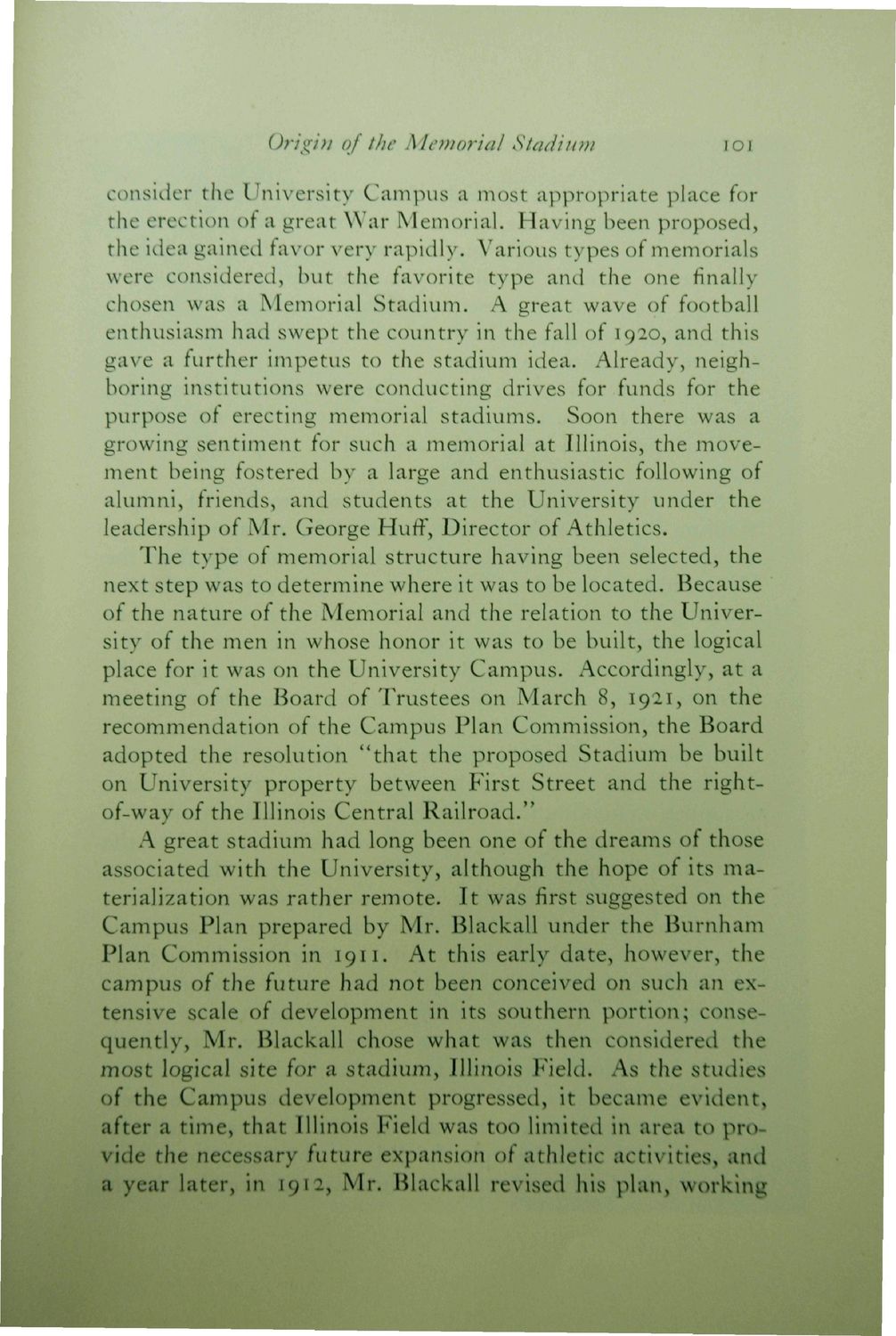| |
| |
Caption: Book - 30 Year Master Plan (Tilton & O'Donnell)
This is a reduced-resolution page image for fast online browsing.

EXTRACTED TEXT FROM PAGE:
Origin of the Memorial Stadium 101 consider the University Campus a most appropriate place for the erection of a great War Memorial. Having been proposed, the idea gained favor very rapidly. Various types of memorials were considered, but the favorite type and the one finally chosen was a Memorial Stadium. A great wave of football enthusiasm had swept the country in the fall of 1920, and this gave a further impetus to the stadium idea. Already, neighboring institutions were conducting drives for funds for the purpose of erecting memorial stadiums. Soon there was a growing sentiment for such a memorial at Illinois, the movement being fostered by a large and enthusiastic following of alumni, friends, and students at the University under the leadership of Mr. George Huff, Director of Athletics. The type of memorial structure having been selected, the next step was to determine where it was to be located. Because of the nature of the Memorial and the relation to the University of the men in whose honor it was to be built, the logical place for it was on the University Campus. Accordingly, at a meeting of the Board of Trustees on March 8, 1921, on the recommendation of the Campus Plan Commission, the Board adopted the resolution "that the proposed Stadium be built on University property between First Street and the rightof-way of the Illinois Central Railroad." A great stadium had long been one of the dreams of those associated with the University, although the hope of its materialization was rather remote. It was first suggested on the Campus Plan prepared by Mr. Blackall under the Burnham Plan Commission in 1911. At this early date, however, the campus of the future had not been conceived on such an extensive scale of development in its southern portion; consequently, Mr. Blackall chose what was then considered the most logical site for a stadium, Illinois Field. As the studies of the Campus development progressed, it became evident, after a time, that Illinois Field was too limited in area to provide the necessary future expansion of athletic activities, and a year later, in 1912, Mr. Blackall revised his plan, working
| |